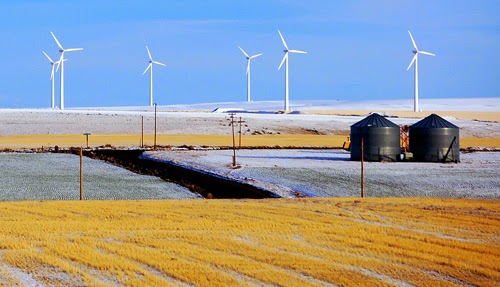There’s more good news blowing in on wind power in the United States. The Global Wind Network recently completed an Energy Department (DOE) funded study that took a critical look at U.S. wind industry manufacturers’ ability to compete in the global marketplace and their readiness to supply the next generation of wind turbines.
Based on a cost breakdown analysis of participating suppliers, the study found that the U.S. turbine component manufacturers maintained the lowest cost on blades and had the most efficient manufacturing processes on towers, blades, and generators when compared to other major global suppliers, including those in Germany and China.
The goal of the study was to help build the competitiveness of U.S. manufacturers by gaining a better understanding of international manufacturing cost drivers and key manufacturing competitiveness factors. Through its “snapshot” comparison of top global competitors, the study’s authors were able to identify potential cost cutting measures to help U.S. manufacturers compete successfully in an increasingly global marketplace. For example, manufacturers could focus on product process design for lean serial production, or invest in facilities able to produce large parts for marine transport to offshore wind farms.
While China is currently the lowest cost manufacturer in three out of four turbine product categories, the study found that the United States is a leader in manufacturing efficiency with the lowest number of total man hours, the highest value added to non-value added ratio, and the highest rate of return. For example, it takes 1,175 hours to construct a turbine tower in the United States, compared to 1,216 hours in Germany, and 2,641 hours in China.
The Global Wind Network also studied U.S. manufacturers’ readiness to supply 3 megawatt (MW) and 5 MW land-based and offshore wind turbines—the next generation of wind turbines—using a Wind Industry Supply Chain Scorecard. U.S. manufacturers’ overall score suggest that they have existing capabilities to manufacture key components for next generation 3 MW wind turbines, including towers, blades, generators, gearboxes, composite housings and fabricated support bases. For example, current suppliers demonstrate the capabilities to produce 3 MW towers with little or no additional investment.
The research provided forward-thinking guidance that will be valuable for the future development of the wind sector. The study stressed that investment in facilities and equipment, particularly for tower and blade manufacturers, will be crucial for supporting the growth of 3 MW and larger turbine manufacturing and the emerging need for an offshore wind supply chain.
Learn more about the U.S. Wind Energy Manufacturing Supply Chain study and the Energy Department’s work with wind technology suppliers on its website.
http://www.evwind.es/2014/09/20/doe-study-finds-u-s-wind-power-industry-competitive-on-a-global-scale/47552
Based on a cost breakdown analysis of participating suppliers, the study found that the U.S. turbine component manufacturers maintained the lowest cost on blades and had the most efficient manufacturing processes on towers, blades, and generators when compared to other major global suppliers, including those in Germany and China.
The goal of the study was to help build the competitiveness of U.S. manufacturers by gaining a better understanding of international manufacturing cost drivers and key manufacturing competitiveness factors. Through its “snapshot” comparison of top global competitors, the study’s authors were able to identify potential cost cutting measures to help U.S. manufacturers compete successfully in an increasingly global marketplace. For example, manufacturers could focus on product process design for lean serial production, or invest in facilities able to produce large parts for marine transport to offshore wind farms.
While China is currently the lowest cost manufacturer in three out of four turbine product categories, the study found that the United States is a leader in manufacturing efficiency with the lowest number of total man hours, the highest value added to non-value added ratio, and the highest rate of return. For example, it takes 1,175 hours to construct a turbine tower in the United States, compared to 1,216 hours in Germany, and 2,641 hours in China.
The Global Wind Network also studied U.S. manufacturers’ readiness to supply 3 megawatt (MW) and 5 MW land-based and offshore wind turbines—the next generation of wind turbines—using a Wind Industry Supply Chain Scorecard. U.S. manufacturers’ overall score suggest that they have existing capabilities to manufacture key components for next generation 3 MW wind turbines, including towers, blades, generators, gearboxes, composite housings and fabricated support bases. For example, current suppliers demonstrate the capabilities to produce 3 MW towers with little or no additional investment.
The research provided forward-thinking guidance that will be valuable for the future development of the wind sector. The study stressed that investment in facilities and equipment, particularly for tower and blade manufacturers, will be crucial for supporting the growth of 3 MW and larger turbine manufacturing and the emerging need for an offshore wind supply chain.
Learn more about the U.S. Wind Energy Manufacturing Supply Chain study and the Energy Department’s work with wind technology suppliers on its website.
http://www.evwind.es/2014/09/20/doe-study-finds-u-s-wind-power-industry-competitive-on-a-global-scale/47552
